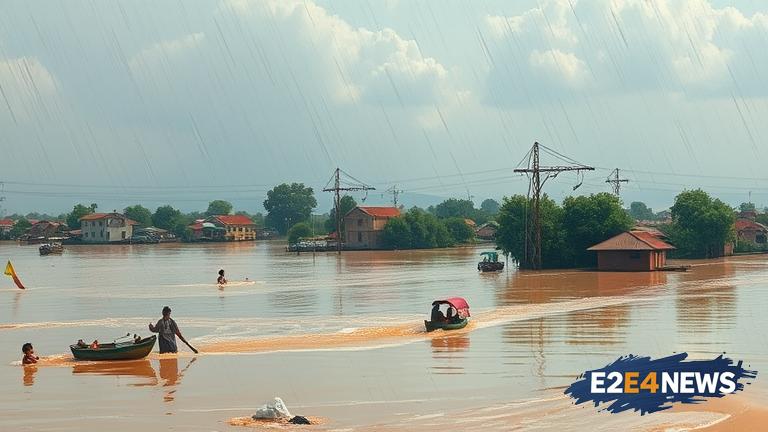Pakistan is experiencing one of the worst humanitarian crises in its history as heavy rains and floods continue to batter the country. The floods, which have been ongoing for several weeks, have affected over 30 million people, with many more at risk. The government has declared a state of emergency and is working to provide aid to those affected. However, the scale of the disaster is vast, and many people are still waiting for help to arrive. The floods have destroyed homes, crops, and infrastructure, leaving many without access to basic necessities like food, water, and shelter. The situation is particularly dire in the southern province of Sindh, where the floods have inundated entire towns and villages. The government has set up relief camps, but many people are still living in the open, exposed to the elements. The floods have also had a devastating impact on the country’s economy, with many businesses and industries forced to shut down. The agricultural sector, which is a major contributor to the country’s economy, has been particularly hard hit. The floods have destroyed crops and livestock, leaving many farmers without a source of income. The government has promised to provide compensation to affected farmers, but many are still waiting for help to arrive. The international community has also pledged to provide aid to Pakistan, with many countries sending teams to help with the relief efforts. However, the scale of the disaster is so vast that it will take a long time for the country to recover. The floods have also raised concerns about the country’s infrastructure and its ability to withstand natural disasters. Many of the country’s dams and levees have been breached, highlighting the need for better infrastructure and disaster preparedness. The government has promised to invest in infrastructure and disaster preparedness, but it will take time and resources to make a significant impact. In the meantime, the people of Pakistan are struggling to cope with the aftermath of the floods. Many are still living in relief camps, and others are trying to rebuild their homes and lives. The floods have also had a significant impact on the country’s health sector, with many hospitals and clinics affected. The government has set up mobile health units, but many people are still without access to basic medical care. The situation is particularly dire for women and children, who are often the most vulnerable in times of crisis. The government and aid agencies are working to provide support to these groups, but it is an uphill battle. The floods have also raised concerns about the country’s environment and the impact of climate change. Many experts believe that the floods are a result of climate change, and that the country needs to take steps to reduce its carbon footprint and prepare for the impacts of climate change. The government has promised to take action, but it will require a significant investment of time and resources. In conclusion, the floods in Pakistan are a humanitarian crisis of epic proportions, and it will take a long time for the country to recover. The government and international community must work together to provide aid and support to those affected, and to help the country rebuild and prepare for the future.
